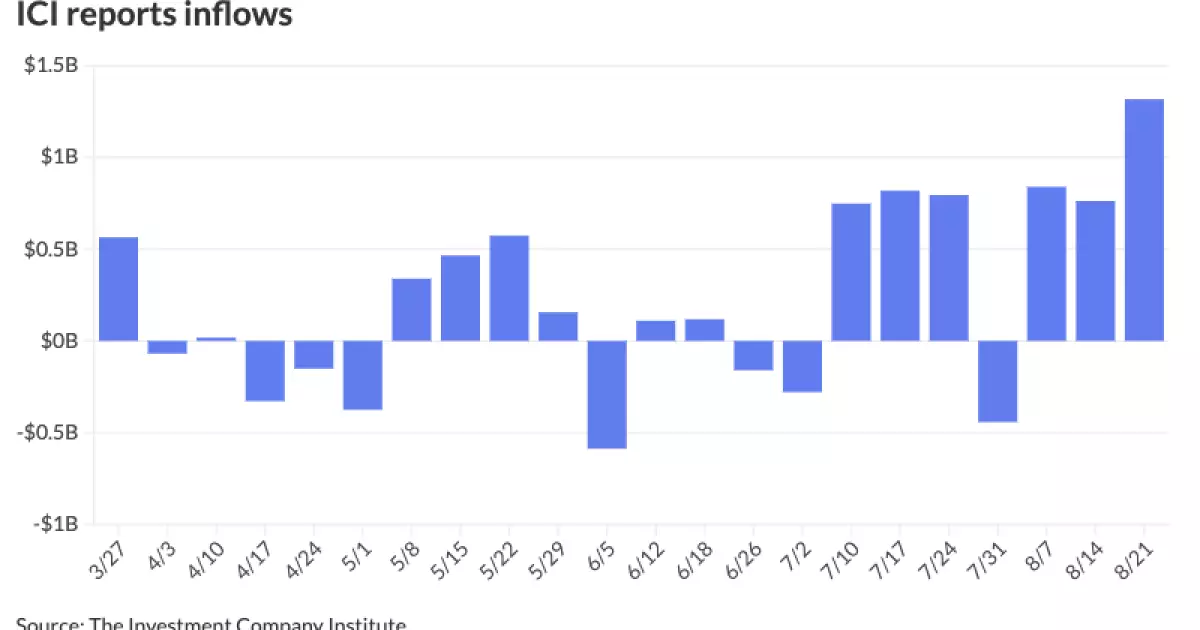Municipal bonds have remained relatively stable, with the two-year muni-to-Treasury ratio coming in at 63%, indicating a slight shift in the market compared to previous days. Despite this stability, the overall trend in yields has been decreasing since the start of the summer. According to Tom Kozlik, managing director and head of public policy and municipal strategy at HilltopSecurities, current yields may not be as lucrative as earlier in the year, yet they are still at attractive levels for investors. The Investment Company Institute reported over $1 billion in inflows into municipal bond mutual funds, suggesting a growing interest in this sector. Exchange-traded funds also saw an increase in inflows, indicating a positive sentiment towards municipal bonds.
When compared to corporate bonds and U.S. Treasuries, municipal bonds continue to offer value to investors. Cooper Howard, a fixed-income strategist at Charles Schwab, highlighted that the all-in tax rate required to achieve the same after-tax yield for both municipal and corporate bonds is currently near the lower end of the range in recent years. This suggests that municipal bonds may provide a more advantageous investment opportunity for higher-tax bracket investors. Moreover, the stability in credit conditions further supports the attractiveness of municipal bonds as an investment option.
Looking ahead, the yield curve is expected to further incline as the Federal Reserve plans to reduce rates. The uncertainty lies in whether the rate cut at the September meeting will be 25 or 50 basis points. Federal Reserve Chairman Jerome Powell’s recent statements have indicated a strong intention to continue cutting rates, with the possibility of larger cuts in the near future. This anticipation has led to expectations of increased volatility in the market, particularly with key indicators like jobless claims and PCE reports on the horizon. Investors will be closely monitoring these reports for signs of market stability and inflation trends.
In the primary market, several large deals were priced by institutions like Wells Fargo, J.P. Morgan, and Jefferies for various municipal projects. For instance, the University of Kentucky issued bonds for its UK Healthcare Cancer Center Parking project, while the Texas Veterans Land Board offered taxable refunding veterans bonds. These transactions indicate a robust market for municipal bonds and a willingness from investors to support infrastructure and community development initiatives.
The yield curve for municipal bonds has shown minimal changes, with slight variations in different maturities. Refinitiv MMD, ICE AAA, S&P Global Market Intelligence, and Bloomberg BVAL have all reported stable yields across various time frames. Despite the stability in the municipal bond market, U.S. Treasuries have also demonstrated consistency in their yields, further adding to the overall market equilibrium.
The municipal bond market appears to be in a relatively favorable position, with steady yields and consistent investor interest. The comparative value of municipal bonds against other fixed-income securities and the Federal Reserve’s influence on market conditions are key factors shaping the current investment landscape. As market conditions evolve, investors should remain vigilant and informed to make sound investment decisions in the municipal bond market.

